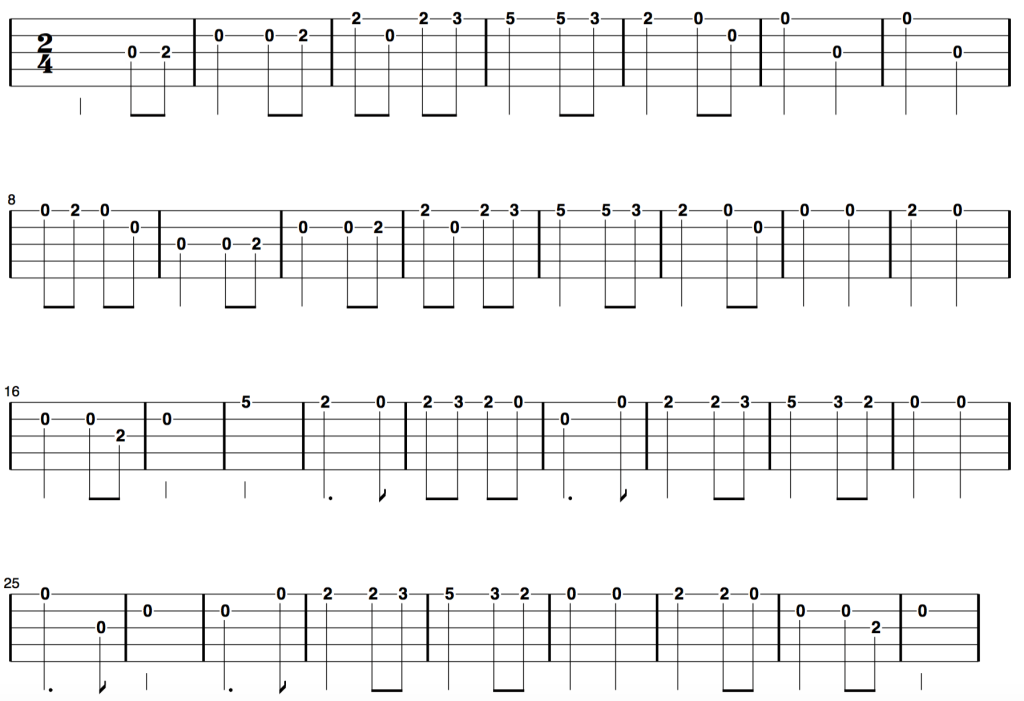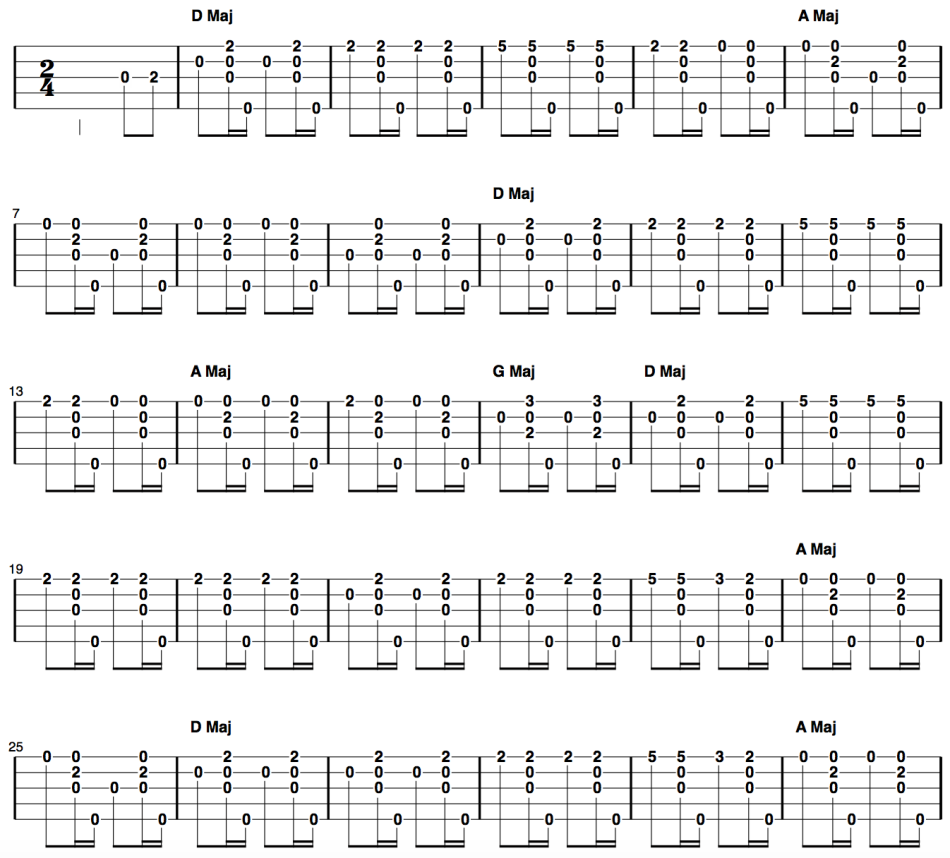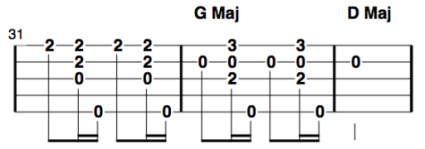Though the majority of the classic clawhammer repertoire consists of tunes – i.e. melodies without words – there are certain songs that sound splendid when clawhammerated, and have slowly worked there way into the hands of frailers.
“Simple Gifts” is one of those songs. Originally a Shaker hymn that was subsequently popularized by composer Aaron Copeland, ultimately becoming one of those timeless melodies you know without knowing how you know it.
Step 1: Know thy Melody
One great thing about learning a song is that they have words! Words that tap into our innate linguistical capacities and thereby greatly enhance our memorizational abilities.
In the video above, I was fortunate enough to recruit my daughter Jules to sing those words for us. Once you’ve listened enough that you can sing along (which some of you may be able to do from the get-go), then you’re ready to find them pretty notes on your instrument.
Step 2: Find the Melody Notes
This tune seems tailor made for double D tuning (or double C if you’d prefer), so go ahead and bring your banjo to aDADE. Once you’re there, see if you can locate the melody notes on your fretboard.
Here’s what I hear as the essential melody:
And here’s that melody represented in tab:
Step 3: Add Some Clawhammery Stuff
To clawhammerize that core melody, let’s go ahead and play all the melody notes that occur on the downbeat (the “bum” stroke in the “bum-ditty”) and follow with a ditty strum while fingering the appropriate chord tones (relevant chords listed above the tab).
And here’s what it sound like:
Step 4: Embellish to Taste
Now it’s time to take things a bit further should you so desire. Perhaps first priority is to see if you can add in a few more melody notes from our core melody we worked out earlier. There’s a bit of melodic space in this song, which frees you up a bit to add any additional flourishes (triplets, Galax lick, etc.).
Don’t get too carried away here – it is called Simple Gifts, after all…
You can hear my dressed up version during the banjo solos in the video above. Here’s what it looks like in tab:




